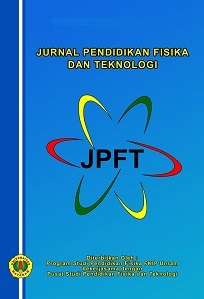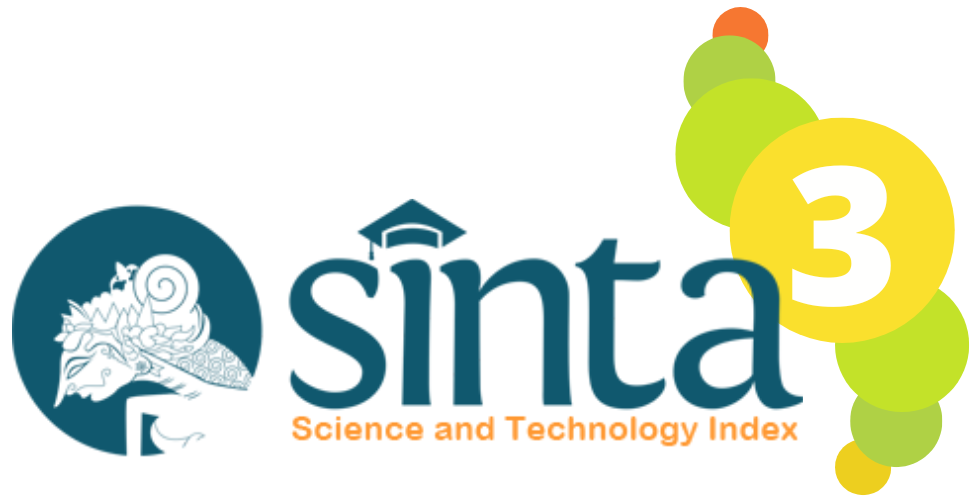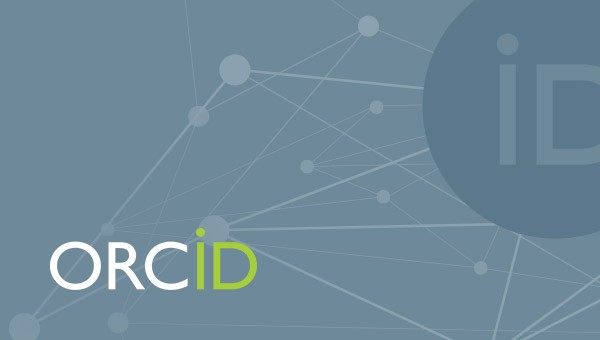Development of STREAM-Based Science E-Module for Junior High School/MTs on the Topic of Magnetism
DOI:
10.29303/jpft.v10i2.7540Published:
2024-12-30Issue:
Vol. 10 No. 2 (2024): July - DecemberKeywords:
E-Module, Science, STREAM, MagnetismArticles
Downloads
How to Cite
Downloads
Metrics
Abstract
Teaching materials can assist teachers in achieving learning objectives. However, teaching materials integrated with Quranic verses in science learning are still limited. This research aims to produce products in the form of electronic teaching materials (e-modules) based on STREAM (Science, Technology, Religion, Engineering, Art and Mathematics) on the topic of magnetism. The existence of STREAM-based and attractively presented e-module products is expected to support students' self-learning. Through the research and development (R&D) method, reseachers adopt the Borg and Gall R&D method, which is limited to the fifth step, namely the initial main product revision. The results showed 85% valid in terms of teaching materials, 95% valid in terms of preparation of teaching materials, 86% valid in terms of integration of science in the Quran and 95% declared practical. Thus, it can be concluded that the e-module-based STREAM is valid and practical to implement during science learning on the topic of magnetism. The integration of Qur’an verses in e-modules helps connect science with religious values and expects to provide contextual learning experiences for junior high school students. This e-module-based STREAM for junior high school science e-module on the topic of magnetism presents an innovative approach in STREAM-based learning and improves the quality and efficiency of the teaching-learning process. The integration of the latest technology is expected to facilitate interactive, collaborative and effective learning experiences, thus improving significant learning outcomes.
References
Agustina, T. W., Rustaman, N. Y., Riandi, & Purwianingsih, W. (2018). The learning of compost practice in university. Journal of Physics: Conference Series, 1013(1). https://doi.org/10.1088/1742-6596/895/1/012128
Agustina, T. W., Rustaman, N. Y., Riandi, & Purwianingsih, W. (2019). Membekalkan kreativitas mahasiswa melalui strategi pembelajaran berbasis STREAM menggunakan konten bioteknologi tradisional. Program Studi Pendidikan Biologi, 9(1), 43–52.
Alias, N., & Siraj, S. (2012). Design and development of physics module based on learning style and appropriate technology by employing Isman instructional design model. The Turkish Online Journal of Educational Technology, 1(4), 12–17.
Azizah, W. A., Sarwi, & Ellianawati. (2019). Pendekatan STREAM terhadap peningkatan kemampuan berpikir kritis peserta didik sekolah dasar. Seminar Nasional Pascasarjana 2019, 462–452.
Haryanto, T. S., Dwiyogi, W. D., & Sulistyorini. (2015). Pengembangan pembelajaran permainan bola voli menggunakan media interaktif di SMP Negeri 6 Kabupaten Situbondo. Jurnal Pendidikan Jasmani, 25(1), 123–128.
Herianto, H., & Lestari, D. P. (2021). Implementasi teori konstruktivisme dalam pembelajaran IPA melalui pemanfaatan bahan ajar elektronik. Jurnal Pembangunan Pendidikan: Fondasi Dan Aplikasi, 9(1), 49–57.
Idris, I. S. K., & Mustofa, Y. A. (2022). Typo checking menggunakan algoritma Rabin-Karp. Jambura Journal of Electrical and Electronics Engineering, 4(1), 87–91. https://doi.org/10.37905/jjeee.v4i1.12150
Imaduddin, M. (2020). A new way to promote Islamization of science: I-SETS design for pre-service science teachers. Journal of Natural Science and Integration, 3(1), 1–8. DOI: http://dx.doi.org/10.24014/jnsi.v3i1.8774
Inguva, P., Shah, P., Shah, U., & Brechtelsbauer, C. (2021). How to design experiential learning resources for independent learning. Journal of Chemical Education, 98(4), 1182–1192. https://doi.org/[DOI-anda-di-sini]
Khoiri, A., Agussuryani, Q., & Hartini, P. (2017). Penumbuhan karakter Islami melalui pembelajaran fisika berbasis integrasi sains-Islam. Tadris: Jurnal Keguruan dan Ilmu Tarbiyah, 2(1), 19–28. http://dx.doi.org/10.24042/tadris.v2i1.1735
Komalasari, B. S., Jufri, A. W., & Santoso, D. (2019). Pengembangan bahan ajar IPA berbasis inkuiri terbimbing untuk meningkatkan literasi sains. Jurnal Penelitian Pendidikan IPA, 5(2), 219–227.
Koparan, T. (2017). Analysis of teaching materials developed by prospective mathematics teachers and their views on material development. Malaysian Online Journal of Educational Technology, 5(4), 8–28.
Lailiyah, S. (2018). Pentingnya membangun pendidikan sains yang relevan dengan ajaran Islam. Spektra: Jurnal Kajian Pendidikan Sains, 4(2), 178–185.
Mubarokah, Y. M., & Julianto. (2022). Pengembangan e-modul berbasis pendekatan STEAM pada pembelajaran IPA materi komponen listrik dan fungsinya dalam rangkaian listrik sederhana kelas 6 sekolah dasar. JPGSD, 10(1), 171–181.
Nugraha, A., Subarkah, C. Z., & Sari. (2015). Penggunaan e-module pembelajaran pada konsep sifat koligatif larutan untuk mengembangkan literasi kimia peserta didik. Prosiding Simposium Nasional Inovasi dan Pembelajaran Sains (SNIPS), 51–56.
Nurâ, S., Jumyati, J., Yuliyanti, Y., Nulhakim, L., & Leksono, S. M. (2023). Scientific approach to learning science in elementary schools. Jurnal Penelitian Pendidikan IPA, 9(8), 6659–6666.
Rahmawati, Y., Ridwan, A., Hadinugrahaningsih, T., & Soeprijanto. (2019). Developing critical and creative thinking skills through STEAM integration in chemistry learning. Journal of Physics: Conference Series, 1156(1). https://doi.org/10.1088/1742-6596/1156/1/012033
Ramdani, A., Jufri, A. W., Gunawan, G., Fahrurrozi, M., & Yustiqvar, M. (2021). Analysis of students' critical thinking skills in terms of gender using science teaching materials based on the 5E learning cycle integrated with local wisdom. Jurnal Pendidikan IPA Indonesia, 10(2), 187–199.
Ramdani, A., Syukur, A., Gunawan, G., Permatasari, I., & Yustiqvar, M. (2020). Increasing students’ metacognition awareness: Learning studies using science teaching materials based on SETS integrated inquiry. International Journal of Advanced Science and Technology, 29(5), 6708–6721.
Rengganis, A., Haruna, N. H., Sari, A. C., Sitopu, J. W., Brata, D. P. N., Gurning, K., Karwanto, & Subakti, H. (2022). Penelitian dan pengembangan (R. Watrianthos & J. Simaemata, Eds.; 1st ed.). Yayasan Kita Menulis.
Safitri, Y., & Priyambodo, E. (2016). Pengembangan subject specific pedagogy (SSP) berbasis science, technology, religion, engineering, and mathematic (STREAM) pada materi polimer untuk SMK. Jurnal Pendidikan Kimia, 28(7), 123–132.
Sakliressy, M. T., Sunarno, W., & Nurosyid, F. (2021). Students scientific attitude in learning physics using problem based learning model with experimental and project methods. Jurnal Ilmiah Pendidikan Fisika Al-Biruni, 10(1), 59–70. https://doi.org/10.24042/jipfalbiruni.v10i1.8347
Shahali, E. H. M., Halim, L., Rasul, M. S., Osman, K., & Zulkifeli, M. A. (2017). STEM learning through engineering design: Impact on middle secondary students’ interest towards STEM. Eurasia Journal of Mathematics, Science and Technology Education, 13(5), 1189–1211. https://doi.org/10.12973/eurasia.2017.00667a
Shatunova, O., Anisimova, T., Sabirova, F., & Kalimullina, O. (2019). STEAM as an innovative educational technology. Journal of Social Studies Education Research, 10(2), 131–144.
Sholihah, N., & Kartika, I. (2018). Pengembangan modul IPA terintegrasi dengan ayat Al Qur’an dan hadis. Lentera Pendidikan: Jurnal Ilmu Tarbiyah dan Keguruan, 21(1), 12–22.
Wahidin, U., & Syaefudin, A. (2018). Pendidik dalam perspektif pendidikan Islam. Edukasi Islam: Jurnal Pendidikan Islam, 7(1), 47–66.
Wandari, G. A., Wijaya, A. F. C., & Agustin, R. R. (2018). The effect of STEAM-based learning on students’ concept mastery and creativity in learning light and optics. Journal of Science Learning, 2(1), 26.
Wang, H. C., & Hsu, C. W. (2006). Teaching-material design center: An ontology-based system for customizing reusable e-materials. Computers & Education, 46(4), 458–470.
Yunianto, T., Negara, H. S., & Suherman. (2019). Flip Builder: Pengembangannya pada media pembelajaran matematika. Jurnal Pendidikan dan Pembelajaran Dasar, 6(2), 115–127.
Author Biographies
Sri Aryani, Universitas Islam Negeri Sultan Syarif Kasim Riau
Tadris Science
Diniya Diniya, Universitas Islam Negeri Sultan Syarif Kasim Riau
Tadris Science
Zarkasih Zarkasih, Universitas Islam Negeri Sultan Syarif Kasim Riau
Tadris Science
License
Copyright (c) 2024 Sri Aryani, Diniya Diniya, Zarkasih Zarkasih

This work is licensed under a Creative Commons Attribution-ShareAlike 4.0 International License.
Authors who publish with Jurnal Pendidikan Fisika dan Teknologi (JPFT) agree to the following terms:
- Authors retain copyright and grant the journal right of first publication with the work simultaneously licensed under a Creative Commons Attribution License 4.0 International License (CC-BY-SA License). This license allows authors to use all articles, data sets, graphics, and appendices in data mining applications, search engines, web sites, blogs, and other platforms by providing an appropriate reference. The journal allows the author(s) to hold the copyright without restrictions and will retain publishing rights without restrictions.
- Authors are able to enter into separate, additional contractual arrangements for the non-exclusive distribution of the journal's published version of the work (e.g., post it to an institutional repository or publish it in a book), with an acknowledgement of its initial publication in Jurnal Pendidikan Fisika dan Teknologi (JPFT).
- Authors are permitted and encouraged to post their work online (e.g., in institutional repositories or on their website) prior to and during the submission process, as it can lead to productive exchanges, as well as earlier and greater citation of published work (See The Effect of Open Access).

